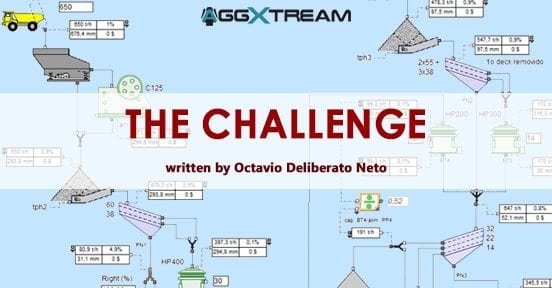Written by Octavio Deliberato Neto
[PT-BR] Clique aqui para ler este artigo em Português do Brasil.
The challenge
For many years, the quarry industry focused on capacity increase by means of replacing equipment, that is, CAPEX projects, with little focus on extracting value from the myriad of data available in its control systems and databases.
Nowadays, gathering large volumes of data is something relatively simple, but discovering knowledge, not so much. Automatic measuring instruments and scanners, digital cameras and computers, and an abundance of other automatic and semi-automatic devices have relieved us of the burden of manual data collection.
Moreover, monitoring systems and databases allow us to store and sample huge amounts of data. John Naisbett was right:
“We are drowning in information but starving for knowledge.”
The aggregates industry must start thinking differently and working smarter towards solving crusher circuit processing problems.
Now what?
Manual analyses are no longer feasible, and charts and diagrams, while very useful and certainly a first and important step, quickly reach their limits. Plant flow simulation software available today for the aggregates industry rely on empirical models or manufacturer’s datasheets and, most often than not, show significant deviation from real plant data. Therefore, if we refuse to consider mass-balancing software as true process simulators and to surrender to the flood of data, we must employ effective simulations and computer-assisted techniques, with which the optimization of aggregates processing plants can be simplified or even automated to some extent.
Our answer
Either in the optimization of existing plants or new projects, the use of simulators of mineral comminution circuits is becoming widespread. AggXtream® has been created in this context, as a stochastic and dynamic modeling and simulation system for crushing, screening and classification circuits aimed at their design and optimization, built with the modern population balance mathematical models of crushing and with model calibration routines that use artificial intelligence techniques.
Several benefits can be drawn from a modeling and simulation project with AggXtream, among which:
- PPMs – Plant Performance Maps: simple yet powerful visualizations of an overwhelming amount of data from sensitivity analyses, aimed at gaining a profound process knowledge and outlining low-cost, high impact optimization strategies.
- Best control strategies and operating rules in human-readable format for automatic process control systems.
- Maximum production of the most desired size fractions.
- Maximum circuit throughput.
- Maximum reduction ratio.
- Reduced production variability.
- Reduced energy consumption.
- Better use of crusher linings.
- Reduced inventories.

All this turn into economic benefits derived from the best use of the company’s assets. Additionally, the ability to plan and control production much more accurately and optimally can reduce the overall level of inventories, meaning lower operating costs and moving on towards more sustainable processes.




